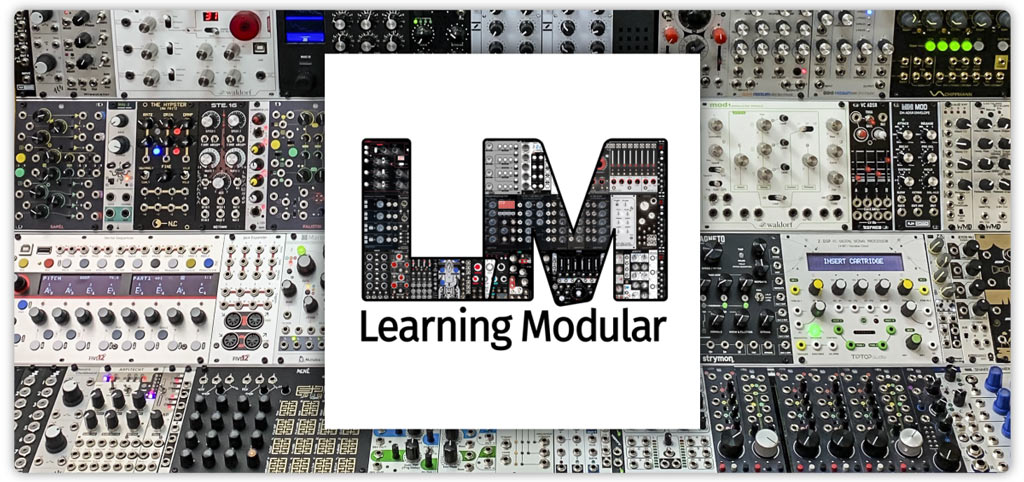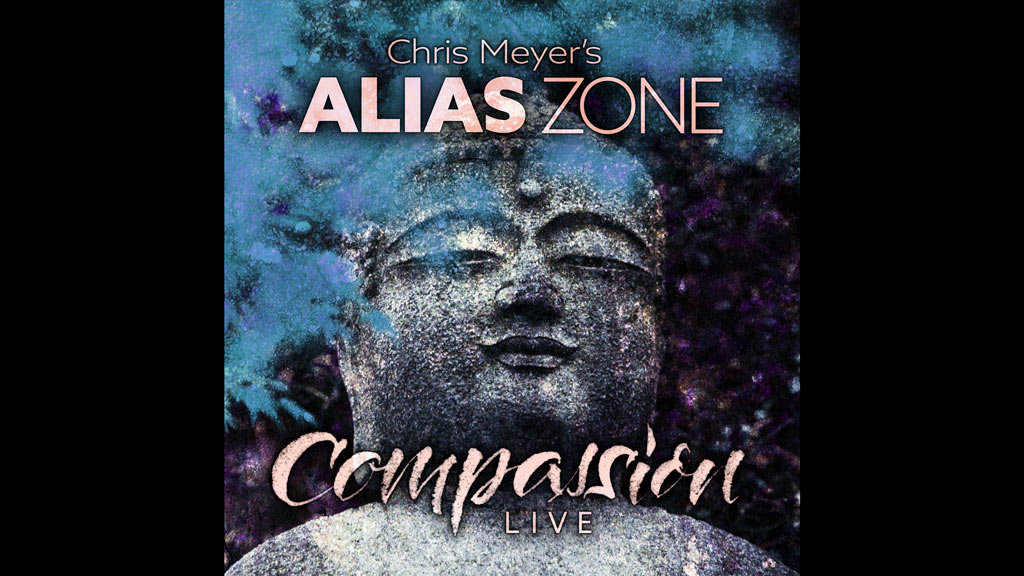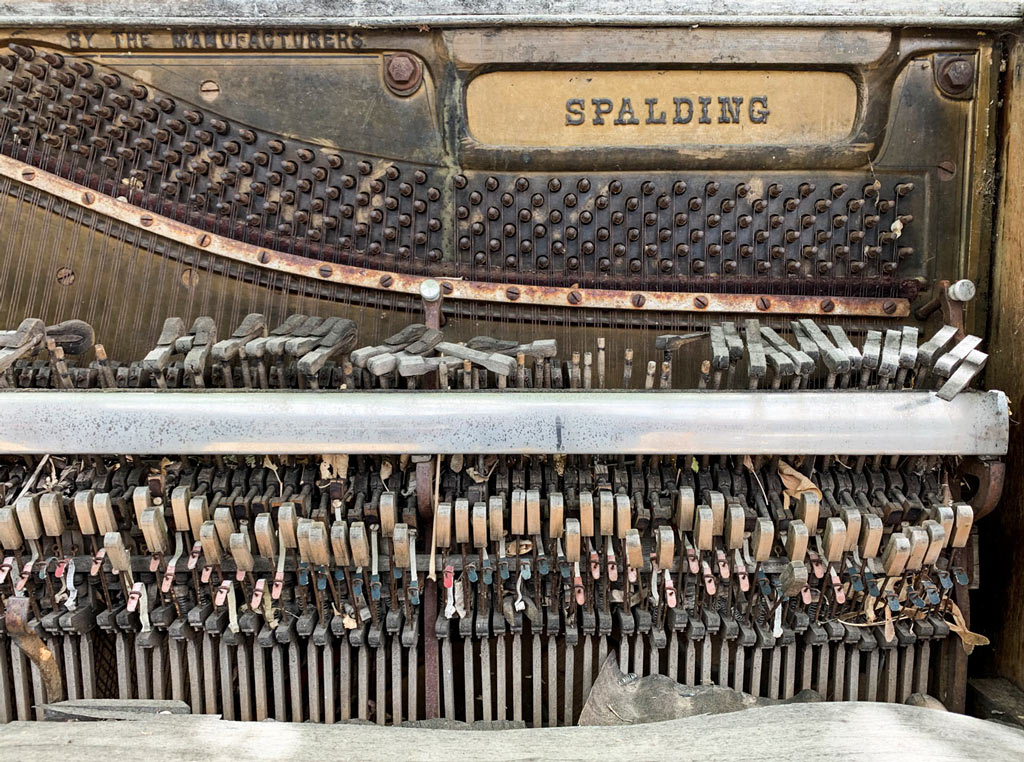My first job in the music industry was working at Sequential Circuits in the 1980s. The recent passing of Sequential’s founder Dave Smith has me nostalgic for the opportunities I didn’t realize at the time he was giving me. I share some of those memories in this month’s main article.
I’m also in between a pair of performances: last week (June 24) I played in quad as part of the Currents New Media Festival in Santa Fe, and this coming weekend (July 2) I’m playing as part of the next installment of SynthaCider in the Denver area. Plus, I released a performance from earlier this year on Bandcamp. Needless to say, I’ve been a bit preoccupied by those – but I still managed to share some tips from the trenches, and do an online interview (with part 2 coming up soon).
If you read last month’s newsletter, you also know that I put all of my online modular synthesis courses on sale for the month of June. I’m going to extend that sale to July 4 – so if you haven’t taken advantage of it yet but planned to, do so now.
- featured article: I worked for Dave Smith at Sequential Circuits in the mid to late 80s. The opportunities he gave me made the rest of this life I’m enjoying possible.
- Alias Zone updates: The original SoCal Synth Society version of my piece Compassion has been mixed, mastered, and is now available on Bandcamp.
- Learning Modular updates: My course sale is going on for a few more days.
- Patreon updates: In the middle of preparing for two gigs just over a week apart, I wrote up what changes I made to my performance system based on what I’ve learned.
- upcoming events: On July 2 I am playing at SynthaCider in the Belmar district of Lakewood (near Denver), Colorado, with tentative plans to play up to four more times later this summer and fall. Plus on July 9/10 (depending on your time zone), Shueh-li Ong will be interviewing me again for Part 2 of her Music & Chat show on Oceanachine.
Remembering Dave Smith
Dave Smith – founder of Sequential Circuits, and the driving force behind both MIDI and the Prophet 5 – passed away unexpectedly on May 31 while attending a music trade show in Detroit. Many people encountered Dave during his “second life” of Dave Smith Instruments and the revival of Sequential, and recall him as being very gracious. I worked for him at the original Sequential Circuits, while it was in the process of going bankrupt. They say that even roses have thorns, and the pressures of keeping his company afloat (plus the audacity of youth) certainly exposed those thorns back then – both his and mine – meaning at the time, my principle memories were of feuding with him (smile). Now that I’m older and hopefully wiser, not only do I realize how patient he was with me, I will gratefully remember Dave and Sequential for pulling me “through the looking glass” from a life of a simple music lover, to a person who got to help create and explain these wonderful instruments for others.
Many know Dave as the person who proposed MIDI – the Musical Instrument Digital Interface. It originally started as a proposal called USI – the Universal Synthesizer Interface – that was presented at an Audio Engineering Society (AES) show in 1981. After that presentation, Dave attempted to rally his fellow US synth manufacturers to unify around a standard. Although Dave insisted it didn’t have to be his proposal, there was still so much “mine is better than yours” fighting among American manufacturers that it was clear they would not reach a consensus. So, Dave turned to the Japanese manufacturers, who were more far-sighted. Roland’s Digital Control Bus (DCB) technology was updated and ultimately became the MIDI 1.0 Specification.
This process left Dave rather burned out on MIDI, so Sequential advertised for a person to take over the lead MIDI role at Sequential. Surprisingly, the position was to be part of the service department (I assume because a lot of the job involved cleaning up the MIDI implementation in their current instruments); for that reason or others, no one inside Sequential took the job. I had read an article by Craig Anderson on MIDI, plus already knew how to program in assembly language (which is what was used in all of those first-generation Sequential instruments), so I applied. After an interview that included having to write a keyboard scanning software routine on the spot, I got the position, which led to me being the Technical Chairman of the MIDI Manufacturers Association (MMA) on several occasions. This opened many doors for me, including writing for magazines.
Eventually, my job was transferred to the engineering department, where I was one of several 20-somethings Sequential entrusted with creating their instruments back then. Around the same time, Dave himself left his front office management job and re-joined engineering as well. As someone who had started his own company – and enjoyed success with the Prophet 5 – he wasn’t afraid to take risks. For example, after the Prophet 2000’s hardware had already been designed around using the same lower-sound-quality 8-bit COMDAC components used in Sequential’s drum machines of the time, new prices came through for both RAM – which was very expensive at the time – and higher-quality 12-bit DACs (digital to analog converters). It barely took Dave an hour to decide to tear up the current design and re-do it with this improved audio chain, which set the Prophet 2000 apart from its main competitors (E-mu Emulator; Ensoniq Mirage) at the time.
At that point, all of Sequential’s synths had been analog. With the introduction of the FM-based DX-7 as well as various wavetable synths (Korg DW series; PPG Wave), it was clear Sequential had to move in that direction. Dave wanted an instrument that could dynamically change the waveform over time. As he had already proven with MIDI, Dave was not a “not invented here” kind of person, and was open to ideas other than his own. He considered licensing the Buchla 400 and its Timbre Modulation technology, and tasked me with evaluating the instrument. It was indeed a powerful tool for synthesis, composition, and performance, but it was a bit obtuse and tedious for a “normal” musician to use. Plus, it was buggy – so I recommended against it. However, I had been playing around with my own idea to extend the wave table scanning concept of the PPG into two dimensions, and had patched up a prototype of that voice with my modular system at home. Dave agreed to go that direction, which led to the creation of the Prophet VS – which I’ve already detailed in this separate post.
Not everything went smoothly. For example, Dave personally didn’t like the sound of resonant filters, and didn’t want to support resonance on the Prophet VS. I argued that resonate filter peaks were going to be essential to create some formant-based sounds (such as vocals), and offered in to leave it off of the Studio 440 sampling drum machine I was working on if he would keep it in the Prophet VS – and he agreed. (If I had a time machine, I would go back and fight to keep resonance in the 440 as well. We were so enamored with the power of sampling, that we ignored also using old-fashioned synthesis to create drum sounds.)
In a recent interview, I was asked if Dave gave me any piece of advice that was useful later in my career. In truth, back then Dave wasn’t the type who handed out advice – let alone compliments – very often; he expected you to do a good job. The one compliment I do remember concerned the MIDI routines I wrote for the Studio 440. The 440 supported two independent MIDI outputs, and I included the ability to send out MIDI signals on each port a user-programmable number of milliseconds early or late while playing a sequence, to compensate for MIDI instruments that were a bit slower to respond. (Why that feature is not in more products today, I do not know.) Dave used it to sequence a classical piece at home, and was impressed with how it tightened up the timing of the relatively slow Prophet 2000 to match Sequential’s more responsive analog instruments. He seemed almost surprised when he told me it worked – which I took to be as good of a compliment as Dave was ever going to give back then!
That last story is a reminder that both the beginning and the end of the day, Dave was also a musician that played these instruments. They were not theoretical engineering exercises he created to see what others would do with them; he was creating products he wanted to use – going back to the very start of Sequential and the Model 600 analog sequencer, Model 700 programmer, and Model 800 digital sequencer he created to control the Minimoog he played in a band. I feel that is the thread that connects him to many of the modular manufacturers in business today, who started their own businesses to create musical tools that they wanted to use themselves.
Dave, you left us too soon and will be missed; thank you again for the opportunities, as well as the instruments you helped create.
Alias Zone Updates
Last month I released on Bandcamp a piece called Compassion. This was its original performance (at the SoCal Synth Society’s NAMMless Jamuary event), and holds a special place in my heart; I cleaned up the mix, and had Howard Givens of Spotted Peccary perform his mastering magic on it. I performed an extended quad version of it as part of the Currents New Media Festival last month, and have also recorded a studio version of it for a future album – but in the meantime, enjoy this document of its origin.
Learning Modular Updates
As I mentioned last month, I know inflation has been putting pressure on a lot of people – so rather than raise my prices, I decided to run on a sale on all of my online courses for the month of June, and made the lowest level of my Eurorack Expansion course free. I’ve decided to keep that sale running through July 4, so the next few days will be your last chance to get them at these prices. I’ve had musicians take the original Learning Modular Synthesis course and comment how it helped them better understand their non-modular synths as well.
Remember: when you buy one of my courses, you get immediate access that does not expire until I decide to close down Learning Modular altogether (which I hope will be many years from now!).
Patreon Updates
During June I was rehearsing for a pair of upcoming shows, meaning I had less free time to write my usual long-form posts for my beloved Patreon subscribers. But that doesn’t mean I was totally silent!
For example, I wrote up an extended post for my +5v and above subscribers about what I had learned (and changed) from my recent performances as I got ready for next two, including some thoughts on choosing envelope generators, problems with VCAs that either cut off the sound too early or not at all, how different modules with the same name can behave differently, and why I added even more multiples to my performing case. (That maybe should have been four separate posts! But my subscribers have said they like the long-form posts where I tie things together with different though threads running throughout.)
My +5v and above subscribers also got the first shot at a long list of gear (both modular and non) I am selling as part of an end-of-spring clear-out. A lot of things are still available, including some mixers – so check it out.
I also wrote a public remembrance of working with Dave Smith on Patreon the day after his passing (with more stories in addition to the above main article), and also publicly posted an indexed version of my first interview with Shueh-li Ong of Oceanachine (we’re doing part two in July – see below).
I’m hoping that July and August give me more time to catch up on all of the articles I have in my head to write for my Patrons, including updates to both my gigging and studio modulars, lessons learned from my recent quad performance, and further tech notes from the studio. Then I’m playing up to four gigs in September and October before slowing down this winter. Thank you to my subscribers who have been patient with me through my manic/depressive fits of writing during my busy schedule this year.
Upcoming Events
July 2: Performance at SynthaCider (Locust Cider, Lakewood/Belmar Colorado, 6:30 PM MDT)
I am playing a live set at Locust Cider in the Belmar section of Lakewood, Colorado (in the greater Denver area) the weekend after the Kraftwerk concert at nearby Red Rocks. Other artists that evening will include El Roachy, Moss Pig, and Modulus10. I will be playing an extended version of The Cave, which I premiered during SynthFest France earlier this year. In addition to my hybrid modular + laptop performance system, I will be bringing out the ATV aFrame for the first time. Admission is free (but do be sure to sample their ciders!). Chris Cardone of Luigi’s Modular also plans to stream it live on his Modulus10 YouTube channel.
July 9/10: Part 2 of my Music & Chat live online interview on Oceanachine (Saturday 6:30 PM PDT / 9:30 PM EDT; Sunday 2:30 AM BST / 3:30 AM Sunday CEST / 11:30 AM Sunday ACT)
We had so much fun during my first interview with Shueh-li Ong on her Oceanachine program, that we’re doing it again – this time covering more of my modular musical past and present, from the PAiA-based system I had with me in college through my current Eurorack-based modular systems and performances today.
Then I’ll be taking a little break to create some new music (as well as mix and master recent tracks) before playing the Chill Out Room at Knobcon in September, with anywhere from three to no more gigs before the end of the year. I’ll keep you posted as I learn more and things firm up.
I’ll be honest with you: All of these live performances have also come with a fair amount of stress. I get so worried about delivering a good performance, that I forget to enjoy the process of performing music. I keep telling others that no one knows what you’re going to play beforehand, so they don’t know if it is coming out exactly the way you planned; instead, just worry about it being good, even if it deviates from your plan – and above all, enjoy the process. Let’s see if I can learn to take my own advice!
constantly rehearsing for my next gig –
Chris







Looking forward to seeing your performance at SynthaCider tomorrow live, and thanks for extending the sale. I thought I had missed out.